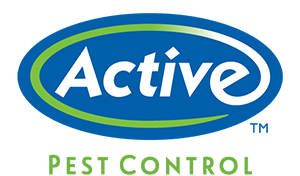Has it really been a month already? My, how time flies when you are busy saving homes and businesses from the adverse effects of pests! But, we checked the calendar, and it really is time for us to highlight one of the amazing members of our Active Pest Control family. This month, we have chosen to introduce you to Jonathan Lucas. Jonathan is one of our services consultants with structural pest control certification. He is, perhaps, the first voice you talk to or the first face that you see when you are looking for pest protection services.
Jonathan knows pests; and he knows the problems that they can cause, which is why he works so tirelessly to keep the homes and businesses in our community safe. He is friendly, professional, and always willing to go the extra mile to serve our community by helping you find the pest protection services that are just right to handle the pests that you are dealing with and to keep new foraging pests at bay. He has an intricate understanding of the many industry leading services that we offer, and you can count on him to help you to choose the exact services that you need, nothing more!
His favorite pest is the termite. Jonathan finds it challenging to deal with termites and knows how secretive and elusive they can be. He also knows that a home or business without proper termite monitoring and control service is a home that is in danger of severe and costly damages. He puts it this way, “Not having termite protection on your home is like driving your car without car insurance!” We couldn’t have said it better ourselves!
When Jonathan is not busy helping you protect your home or business from pests, he is spending time with his wife, Valerie, and their two children, Kristen and Jordan. Jonathan says that he has been “married for 32 years – all in a row – to the same person!” which in today’s world is quite an accomplishment! Congratulations Jonathan and Valerie!
If you, too, possess the commitment, dedication, and drive that Jonathan does, we want to talk with you. We are always looking for hard-working, committed people to join the Active Pest Control family. Contact us today to learn more about our competitive wages, excellent benefits package, and positive work environment. Who knows; our next blog might just highlight you!

